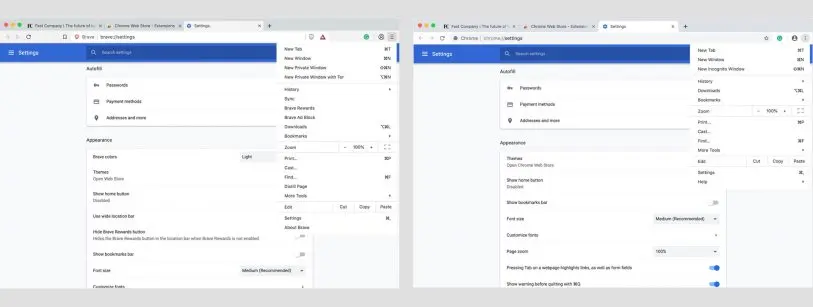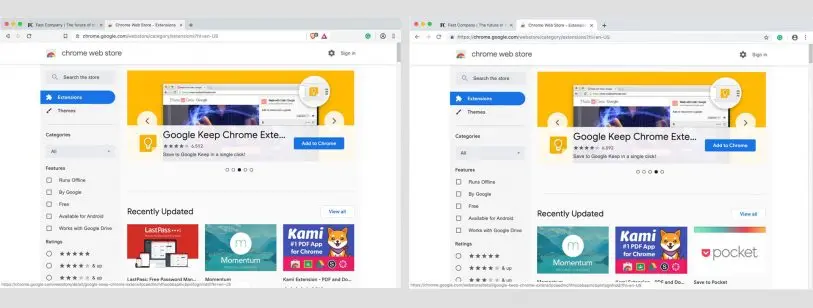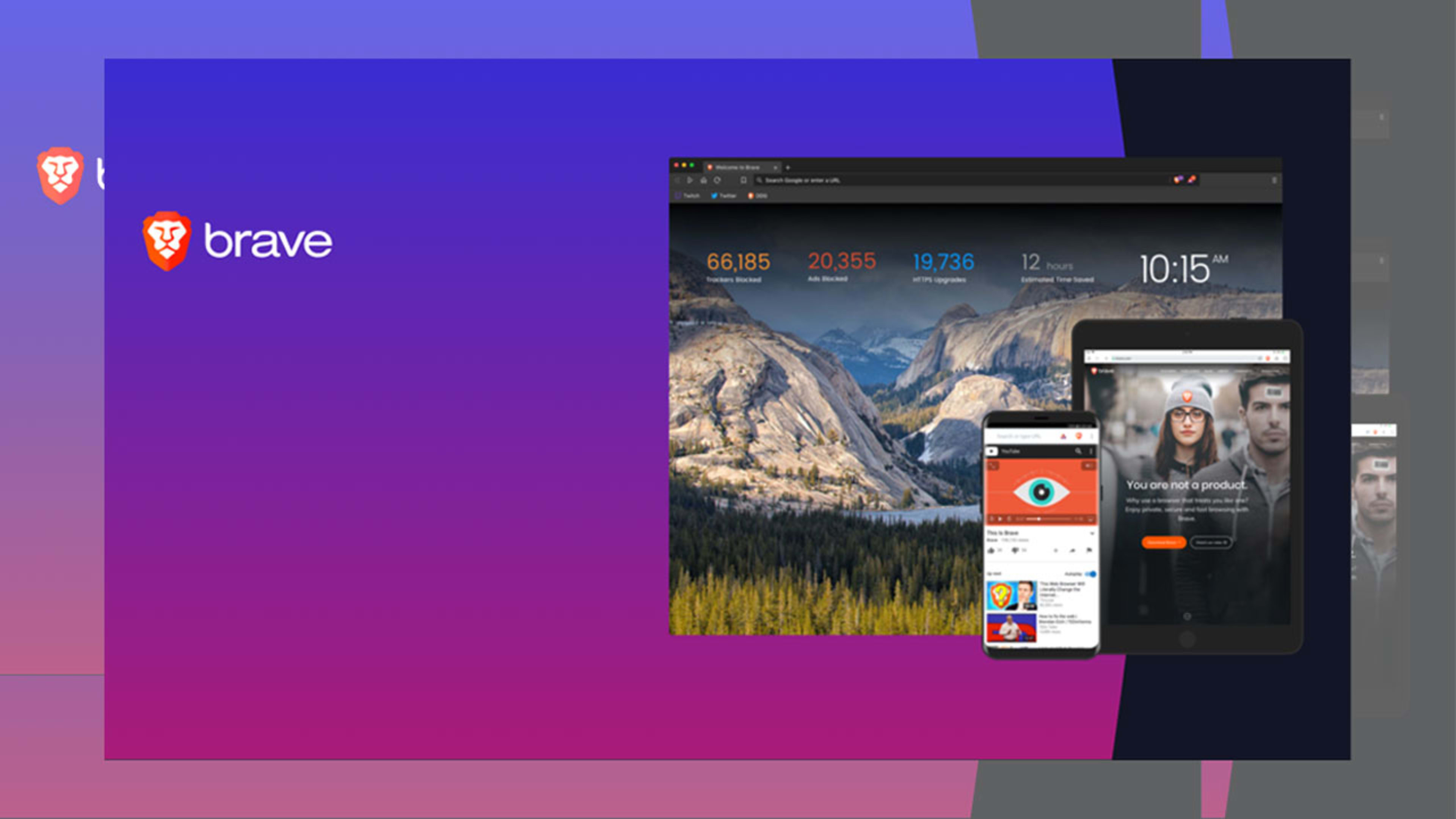Google’s Chrome is the world’s most popular web browser, with an estimated global market share of over 66% as of April 2018, according to Statista. And for the most part, it’s easy to see why Chrome dominates. It doesn’t hog resources; it’s got an attractive, minimalist interface; and it’s incredibly customizable thanks to a web store with tens of thousands of extensions and themes.
The drawback to Chrome is that it’s owned by Google. This alone is enough to unnerve people who care about keeping their online activity to themselves. After all, Google’s aim is to know as much about us as possible in order to target us with more relevant ads. And with Chrome, Google can suck up even more information about your browser’s activities. The company has also tried to pull off some things in Chrome in the past that have been branded “a full-fledged assault on user privacy.”
I’m a big believer in browser compartmentalization. I use three browsers frequently: Safari for sites I need to log in to (I call this my “accounts” browser), Firefox for general web browsing of sites I never log in to (my “everyday” browser), and–until recently–Chrome for the publishing systems and online tools I use as a journalist (my “work” browser). As for why I used Chrome for work: I’ve found that it’s the most widely compatible browser and behaves nicely with whatever services I use.
Recently, however, I’ve decided to de-Google my life as much as possible. This included ditching Chrome. Since I was already using Safari as my “accounts” browser and Firefox as my “everyday” browser, that meant I needed to find a third browser to replace Chrome as my new “work” browser.
I ended up giving the upstart Brave web browser a try–and I’ve never looked back since. After using Brave instead of Chrome for the few months, I now think every Chrome user should switch to Brave and ditch Google’s browser for good. Here’s why.

Visually, Brave is Chrome’s twin
Seriously, Brave looks almost exactly like Chrome–and if you know how to use Chrome, you already know how to use Brave.
The reason for this is because Brave is built atop Chromium, the same open-source browser project as Chrome. There are a fair number of Chromium-based browsers out there, the most well-known probably being Opera. Brave is a much younger browser, however, and unlike Opera, the people behind it decided not to deviate the look of its UI from Chrome that much. Speaking of the people behind Brave, it was cofounded by Brendan Eich, the creator of Javascript and the cofounder of Mozilla, the organization that makes Firefox. The fact that Eich cofounded Brave is why I decided to give the browser a try in the first place over other Chromium-based browsers.
And I’m glad I did. From the minute I launched Brave and imported my Google Chrome bookmarks and cookies, there was zero learning curve. I felt like I was still using Chrome. This makes the switch painless.
It’s got privacy baked in–including Tor
Another reason I decided to go with Brave over other Chromium browsers is that Brave has some pretty nifty privacy protections baked in. Most other browsers make you manually add extensions to get similar results.
For example, Brave features HTTPS Everywhere built in. This forces websites to default to an encrypted connection when you access them, keeping your clicks and other activities on those websites private from your ISP. On other browsers, HTTPS Everywhere is an extension users need to manually download–something your average internet user probably doesn’t do.
Brave also has fingerprinting protections built in. This protects you from advertisers and data firms tracking you around on the web based on the unique characteristics of your computer, like its screen size, browser window size, fonts installed, and more. The browser also blocks third-party cookies by default as well as offering built-in script blocking.
But the best privacy feature of Brave is its private browsing mode. Despite what most people assume, standard private browsing (known in Chrome as “Incognito” mode) doesn’t keep your web activity or identity private from your ISP or the websites you visit–or perhaps even from Google. Instead, those modes simply block traces of your browsing activity from being left on your computer.
Brave’s private browsing mode is radically different–and provides much more privacy. When you activate a private window in Brave, that window uses Tor, a software project that helps mask your IP address by running your internet activity through a middleman server that forwards your request to its final destination. This makes it virtually impossible for the website you are accessing to know that the request came from your computer.
Usually, if you want to use Tor, you need to download a separate browser. By adding Tor to Brave’s built-in privacy mode, Brave is giving users the privacy protections many people wrongly assume they’ve had all along through privacy modes in other browsers.

Every Chrome extension and theme works in Brave
The single biggest reason I was able to switch from Chrome to Brave is that Brave is 100% compatible with the Chrome web store, which houses all the Chrome extensions and themes available to the Chrome browser.
Normally, extensions need to be written for a specific browser. But since Brave uses Chromium, all extensions written for Chrome work natively in Brave, without additional work for developers.
The fact that extensions are usually browser-specific keeps fans of extensions tied to a certain browser. They’re reluctant to move to a new browser unless their favorite extensions are supported. But that’s not an issue with Brave. In the browser, simply navigate to Google Chrome’s web store, find the extension you want to install, and click the “Add to Chrome” button. Despite what the button says, the extension will be added to Brave without a hitch.
It’s because of these three things—Brave’s indistinguishable look from Chrome, the massive privacy protections built in, and Brave’s full support for the Chrome web store—that switching from Google Chrome a no-brainer. I’ve been a Brave convert for a few months, and I haven’t missed Chrome once. That’s because I feel like I’m still using it—just a version which protects my online privacy far more than Google would ever allow.
Recognize your brand’s excellence by applying to this year’s Brands That Matter Awards before the early-rate deadline, May 3.
